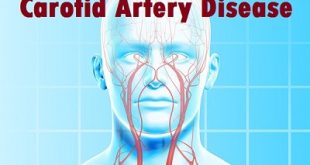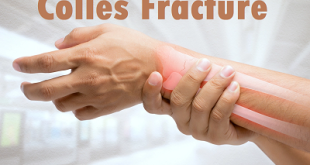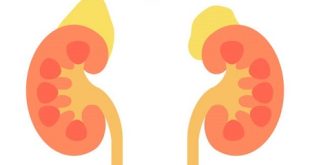What is Carcinoid Syndrome?
Carcinoid syndrome is a group of symptoms you might have with a type of cancer called carcinoid tumors. These tumors start in cells that make certain chemicals, and they release more of those chemicals into your bloodstream. The symptoms can be similar to those of other conditions like menopause or asthma. For example, there may be times when your skin suddenly gets red and warm, you have trouble breathing, or you have a rapid heartbeat.
Carcinoid tumors usually grow in your stomach and intestines, but you can also get them in your lungs, pancreas, testicles, or ovaries. If you have carcinoid syndrome, it usually means the cancer has spread, most often to your lungs or liver. If your doctor finds a tumor early, they might be able to remove it. But other times, there’s no cure for carcinoid tumors. Treatments can help you live longer and better. You can also take steps to relieve the symptoms and feel more comfortable.
Pathophysiology
Serotonin acts on smooth muscle to cause diarrhea, colic, and malabsorption. Histamine and bradykinin, through their vasodilator effects cause flushing.
The role of prostaglandins and various polypeptide hormones, which may be produced by paracrine cells, awaits further investigation; elevated human chorionic gonadotropin and pancreatic polypeptide levels are occasionally present with carcinoids.
Some patients develop right-sided endocardial fibrosis, leading to pulmonic stenosis and tricuspid regurgitation. Left-heart lesions, which have been reported with bronchial carcinoids, are rare because serotonin is destroyed during passage through the lungs.
Causes of carcinoid syndrome
Carcinoid syndrome happens when a carcinoid tumor produces too many hormone-like substances. These may include serotonin, bradykinins, tachykinins, and prostaglandins.
When tumors are in the GI tract, the body is usually able to neutralize these substances.
When tumors are outside the GI tract, such as the liver or ovaries, the substances can’t be broken down. In these cases, the substances are released into the bloodstream which causes carcinoid syndrome symptoms.
Risk factors of carcinoid syndrome
Common risk factors in the development of carcinoid syndrome include:
- Age (50 years or older)
- Gender: female
- Race: African Americans
- Family history of multiple endocrine neoplasia type 1
- Family history of neurofibromatosis type 1
Genetic syndromes such as
- Tuberous sclerosis complex
- Von Hippel Lindau disease
- Familial small intestinal neuroendocrine tumor
Risk factors for carcinoid tumours of stomach
- Atrophic gastritis
- Pernicious anemia
- Zollinger-Ellison syndrome
Symptoms of carcinoid syndrome
The signs and symptoms of carcinoid syndrome depend on which chemicals the carcinoid tumor secretes into your bloodstream.
The most common signs and symptoms include:
- Skin flushing. The skin on your face and upper chest feels hot and changes color — ranging from pink to purple. Flushing episodes may last from a few minutes to a few hours or longer.
- Flushing may happen for no obvious reason, though sometimes it can be triggered by stress, exercise or drinking alcohol.
- Facial skin lesions. Purplish areas of spiderlike veins may appear on your nose and upper lip.
- Frequent, watery stools sometimes accompanied by abdominal cramps may occur in people who have carcinoid syndrome.
- Difficulty breathing. Asthma-like signs and symptoms, such as wheezing and shortness of breath, may occur at the same time you experience skin flushing.
- Rapid heartbeat. Periods of a fast heart rate could be a sign of carcinoid syndrome.
Possible Complications
Complications of carcinoid syndrome may include:
- Increased risk of falls and injury (from low blood pressure)
- Bowel obstruction (from tumor)
- Gastrointestinal bleeding
- Heart valve failure
A fatal form of carcinoid syndrome, carcinoid crisis, may occur as a side effect of surgery, anesthesia or chemotherapy.
Diagnosis of carcinoid syndrome
Your doctor will assess your signs and symptoms to rule out other causes of skin flushing and diarrhea. If no other causes are found, your doctor may suspect carcinoid syndrome.
To confirm a diagnosis, your doctor may recommend further tests, including:
Urine test. Your urine may contain a substance made when your body breaks down serotonin. An excess amount of this substance could indicate that your body is processing extra serotonin, the chemical most commonly excreted by carcinoid tumors.
Blood test. Your blood may contain high levels of certain substances, including the protein chromogranin A, which is released by some carcinoid tumors.
Imaging tests. Imaging tests also may be used to locate the primary carcinoid tumor and determine whether it has spread. Your doctor may start with a computerized tomography (CT) scan of your abdomen, because most carcinoid tumors are found in the gastrointestinal tract. Other scans, such as MRI or nuclear medicine scans, may be helpful in certain cases.
Treatment and medication
Surgery
Surgery may be performed to remove the primary tumor and debulk liver metastases in carefully selected patients after multidisciplinary evaluation. For airway lesions, surgeries such as lobectomy, sleeve resection or pneumonectomy may be performed depending on the size and location of the tumor.
Somatostatin Analog Injections
Somatostatin analog (Sandostatin, Lanreotide) injections may reduce the signs and symptoms of carcinoid syndrome, including skin flushing and diarrhea. Somatostatin analogs are synthetic forms of somatostatin, a pancreatic hormone.
Hepatic Artery Embolization
Embolization is a therapy to treat liver tumors by blocking their blood supply. Because liver tumors thrive on highly oxygenated blood from the hepatic artery, blocking that supply may kill it. Chemoembolization, also known as Transarterial Chemoembolization (TACE), adds the delivery of chemotherapeutic agents to the blockade of the tumor.
Locoregional Therapies
Radiofrequency ablation delivers heat through a needle to the metastatic cells in the liver, causing cell death. Cryotherapy works similarly, but by freezing the tumor. A new technology, microwave ablation (MWA), destroys liver tumors using heat generated by microwave energy.
Chemotherapy
Chemotherapy drugs may shrink neuroendocrine tumors, in particular, those of pancreatic origin. These include temozolomide, fluorouracil, oxaliplatin, and streptozocin-based chemotherapy regimens.
Loco-regional Therapies
Radiofrequency ablation delivers heat through a needle to the cancer cells in the liver, causing the cells to die. Cryotherapy is similar, but it works by freezing the tumor. A newer technology, microwave ablation (MWA), destroys liver tumors by using heat generated by microwave energy.
Other Medications
Anti-diarrheal and anti-cholinergic medications are also used. Patients are advised to avoid alcohol and foods with a high concentration of tyramine, which may worsen symptoms.
Lifestyle and home remedies
Talk to your doctor about self-care measures that may improve your signs and symptoms. Self-care measures can’t replace treatment, but they may complement it. Ask your doctor if you should:
- Avoid things that cause skin flushing. Certain substances or situations, such as alcohol or large meals, can trigger flushing. Some people experience flushing when they’re feeling stressed or upset. Keep track of what causes your flushing, and try to avoid those triggers.
- Consider taking a multivitamin. Chronic diarrhea makes it difficult for your body to process the vitamins and nutrients in the food you eat. Ask your doctor whether taking a multivitamin may be a good idea for you.
Outlook for carcinoid syndrome
Carcinoid syndrome can have a significant impact on your quality of life. It can affect how you eat, exercise, and function on a day-to-day basis.
Carcinoid syndrome usually occurs with advanced carcinoid cancer, or cancer that’s metastasized to a distant site.
Cancer survival rates are based on the stage at diagnosis. The 5-year relative survival rates for GI carcinoid cancer are:
- Localized: 98 percent
- Regional: 93 percent
- Distant: 67 percent
These figures are based on people diagnosed between 2008 and 2014. Keep in mind that cancer treatments change quickly. There’s a chance the general prognosis has improved since these figures were compiled.
In addition, these are only general survival rates. Your prognosis depends on a variety of factors, including your age and overall health. Your oncologist can review your medical history, assess your response to treatment, and provide a more personalized outlook.
 Diseases Treatments Dictionary This is complete solution to read all diseases treatments Which covers Prevention, Causes, Symptoms, Medical Terms, Drugs, Prescription, Natural Remedies with cures and Treatments. Most of the common diseases were listed in names, split with categories.
Diseases Treatments Dictionary This is complete solution to read all diseases treatments Which covers Prevention, Causes, Symptoms, Medical Terms, Drugs, Prescription, Natural Remedies with cures and Treatments. Most of the common diseases were listed in names, split with categories.








which of take medicine for best result
Please consult the doctor to get the prescribed medicines.